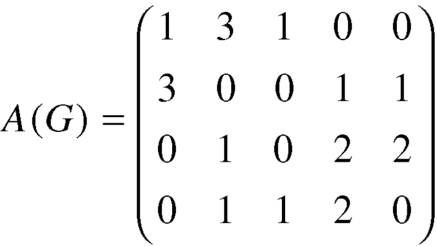Unit-6
Graph Theory
Q1) Define graph theory.
A1)
Graph theory is a relatively new area of mathematics
Graph is the form of representing of descriptive data in the terms of verticals and edges.
Graph theory is used in various fields like computer science, information technology, genetics, telecommunication etc.
A graph is a collection of vertices and edges in which each edge is assigned to pair of points called terminal.
We can say that a graph is a network of dots connected by lines.
Mathematically we can define a graph as-
A graph is a pair of set (V, E) where-
1. V is a non-empty set whose elements are called vertices.
2. E is collection of two-element subset of V called edges.
Q2) Consider the graphs given below-


Check whether these graphs are same or not?
A2)
As we can see that these graphs are not same because here  and
and  are not same since
are not same since  but a does not belongs to
but a does not belongs to  .
.
These two graphs look same but not equal.
We can draw these graphs as below-
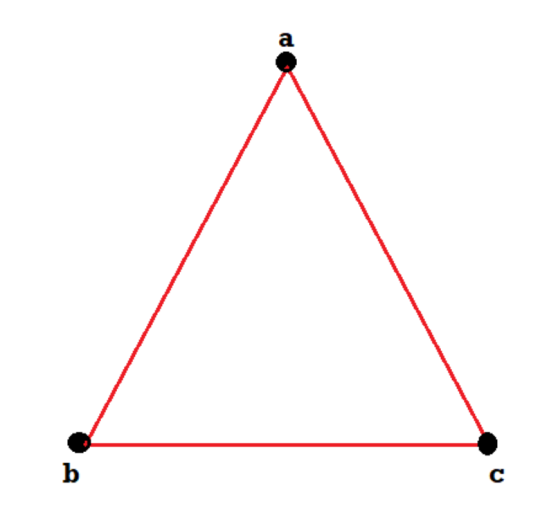
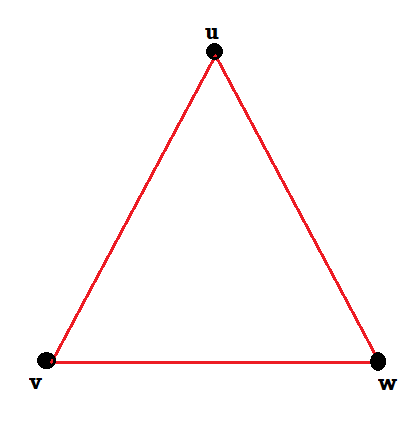
These types of graphs are known as isomorphic graph when they are same except for the name of vertices.
Q3) Define degree of vertex.
A3)
Degree of vertex: The number of edges incident on a vertex v is called degree of vertex v, with loop being counted twice.
We can denote it as-
Degree of v = d(v)
Q4) What are the sub-graphs & isomorphic graph?
A5)
Sub-graph
We can say that  is a sub-graph of G = (V, E), and write
is a sub-graph of G = (V, E), and write  provided
provided  .
.
We can say that  is an induced sub-graph of G = (V, E), provided
is an induced sub-graph of G = (V, E), provided  and every edge in E whose vertices are still in
and every edge in E whose vertices are still in  is also an edge in
is also an edge in  .
.
Isomorphic graphs-
Let  and
and  be two graphs. The graph
be two graphs. The graph  and
and  are said to be isomorphic if there is a bijective function
are said to be isomorphic if there is a bijective function  such that if u and v are end vertices of some edge e ∈
such that if u and v are end vertices of some edge e ∈  then
then  end vertices of
end vertices of 
Q5) What are the applications of graph theory?
A5)
1. Graphs are used to define the flow of computation.
2. Graphs are used to represent networks of communication.
3. Graphs are used to represent data organization.
4. Graph transformation systems work on rule-based in-memory manipulation of graphs. Graph databases ensure transaction-safe, persistent storing and querying of graph structured data.
5. Graph theory is used to find shortest path in road or a network.
6. In Google Maps, various locations are represented as vertices or nodes and the roads are represented as edges and graph theory is used to find the shortest path between two nodes.
Q6) Define path and connectedness.
A6)
Paths-
Let G be a non-directed graph. A sequence P of zero or more edges of the form  , where
, where  are the vertices of G is called a path in G.
are the vertices of G is called a path in G.
We denote this by P
The vertex  is called the initial vertex and the vertex
is called the initial vertex and the vertex  is called the terminal vertex of the path P.
is called the terminal vertex of the path P.
Connectedness-
Let G be a graph. Two vertices v and w of G are connected if, and only if, there is a walk from v to w. The graph G is connected if, and only if, given any two vertices v and w inG, there is a walk from v to w. Symbolically,
G is connected ⇔∀vertices v,w∈V(G), ∃a walk from v to w.
Q7) Find the adjacency matrix of the graph-
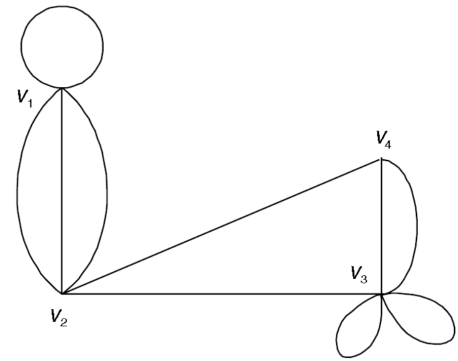
A7)
The adjacency matrix of the above graph will be-
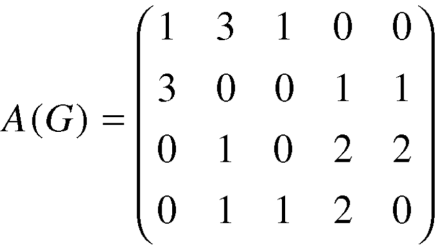
Q8) Define adjacency matrix of a non-directed graph.
A8)
Let G be a graph with n vertices and no parallel edges. The adjacency matrix of G in a n × n. symmetric binary matrix A (G) 
Where


Where  and
and  are vertices of G.
are vertices of G.
The following is a example of the adjacency matrix of the simple graph G.
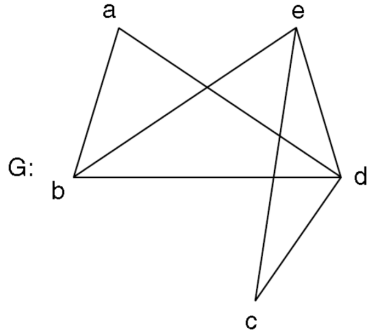
Adjacency matrix x; A (G)-
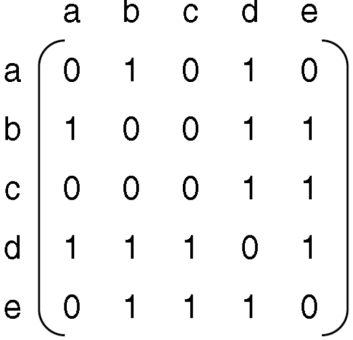
Q9) Define adjacency of a digraph.
A9)
Let G be a digraph with n vertices, containing non-parallel edges. The adjacency matrix A(G) of the digraph G is an n × n matrix defined by


= 0 otherwise
Q10) Find the adjacency matrix of the graph-

A10)
The adjacency matrix of the above graph will be-
